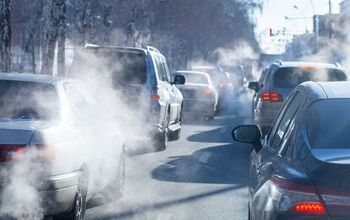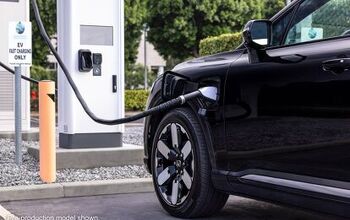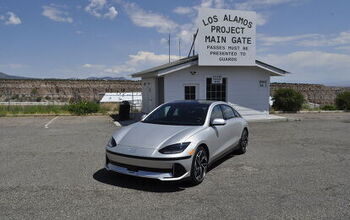Study Links Legalized Recreational Marijuana to Increased Crash Rates

Tragically, the Insurance Institute for Highway Safety has correlated the legalization of recreational marijuana use with more automobile accidents. Pot smoking in Colorado, Oregon and Washington seems to have resulted in collision frequencies roughly 3 percent higher than what would have been expected without legalization, according to a recent analysis from the Highway Loss Data Institute.
While this certainly isn’t an endorsement for de-legalizing recreational marijuana use, it is a reminder to stay off the roads if you’re having your head changed. Operating a motor vehicle while baked can get you into a sticky-icky situation, and nobody wants you having a green out on the expressway. That said, risks associated with driving under the influence of marijuana are much less cut-and-dried than alcohol.
This is largely due to how difficult it is for researchers to test marijuana. Despite its growing legalization, marijuana is classified by the Drug Enforcement Agency as a Schedule 1 drug, and subject to the highest level of restriction. Researchers need approval from their institution and apply for a license from the DEA before conducting a study. The government also has only so much pot to dole out for research purposes and gives the majority of it to the National Institute on Drug Abuse — fair and balanced testing of whether or not getting high while driving is safe is a little lower on NIDA’s list of priorities. In this instance, the same might be suggested of the IIHS.
Studies utilizing stimulators have indicated that driving stoned can degrade overall driving effectiveness. However, the results of several studies on the subject of marijuana’s effect on reaction time have proven contradictory, especially in a real-world setting. While some studies have found that THC could more than double a crash risk, others, including a large-scale federal case-control study, were unable to establish any definitive link between marijuana use and crashes.
That’s further exacerbated when testing extends to someone who is no stranger to the herb. Despite the demonstrable neurophysiologic impairments associated with THC, studies involving experienced smokers driving on an outdoor course have shown almost no functional impairment under the influence of marijuana — except when combined with alcohol.
Reasons for the discrepancies between simulation and real-world testing have been hard to pin down. Many researchers have suggested that, unlike drivers under the influence of alcohol (who tend to underestimate their degree of functional deterioration), marijuana users typically overestimate their impairment and consequently employ compensatory strategies.
In one study where participants were given a dose of 7 mg of THC, roughly a third of a joint, drivers rated themselves as impaired even though their driving performance was not. A second test group with a blood-alcohol content of 0.04 percent, about two standard drinks and half the legal limit in most U.S. states, exhibited driving performance impairment even though they rated themselves as unimpaired.
However, the HLDI seems to indicate an appreciable risk factor that lab testing has been unable to replicate. Using neighboring states as comparative controls, the institute undertook a combined analysis of Colorado, Oregon and Washington before and after law changes. The control states were Idaho, Montana, Nevada, Utah and Wyoming. The collected data included collision claims filed between January 2012 and October 2016 for 1981 to 2017 model year vehicles. Analysts attempted to control for differences in driver population, insured vehicle fleet, the mix of urban versus rural driving exposure, unemployment status, and weather patterns.
“The combined-state analysis shows that the first three states to legalize recreational marijuana have experienced more crashes,” explained Matt Moore, senior vice president of HLDI. “The individual state analyses suggest that the size of the effect varies by state.”
Combined, it only accounts for a three percent increase among states that have legalized recreational marijuana usage — although cherry picking certain direct state-to-state comparisons yielded much higher results. For example, Colorado saw a whopping 14 percent increase when compared only to Nebraska.
“The combined effect for the three states was smaller but still significant at 3 percent,” Moore says. “The combined analysis uses a bigger control group and is a good representation of the effect of marijuana legalization overall. The single-state analyses show how the effect differs by state.”
It’s an admirable attempt, but some elements of the study are problematic. Firstly, there’s no assurance that drivers in other states weren’t also smoking marijuana illegally. Colorado, Oregon and Washington may be the first to legalize its usage but recreational cannabis is common in states where the law prohibits it. This also wasn’t a national assessment — it was a regional analysis specifically looking for disparities between several states. While the institute claimed to have made every effort to correct for variables, it couldn’t possibly have accounted for all of them and provided little analysis on individual states’ accident rates before and after legalization.
This is certainly enough to encourage motorists not to risk driving under the influence of marijuana but not enough to say with any degree of certainty that legalizing recreational marijuana use poses an increased risk to road safety. Unfortunately, the IIHS disagrees.
“Worry that legalized marijuana is increasing crash rates isn’t misplaced,” says David Zuby, executive vice president and chief research officer of the Insurance Institute for Highway Safety. “HLDI’s findings on the early experience of Colorado, Oregon and Washington should give other states eyeing legalization pause.”
David Zuby sounds like a total bummer of a dude.
[Images: Paramount Pictures]

A staunch consumer advocate tracking industry trends and regulation. Before joining TTAC, Matt spent a decade working for marketing and research firms based in NYC. Clients included several of the world’s largest automakers, global tire brands, and aftermarket part suppliers. Dissatisfied with the corporate world and resentful of having to wear suits everyday, he pivoted to writing about cars. Since then, that man has become an ardent supporter of the right-to-repair movement, been interviewed on the auto industry by national radio broadcasts, driven more rental cars than anyone ever should, participated in amateur rallying events, and received the requisite minimum training as sanctioned by the SCCA. Handy with a wrench, Matt grew up surrounded by Detroit auto workers and managed to get a pizza delivery job before he was legally eligible. He later found himself driving box trucks through Manhattan, guaranteeing future sympathy for actual truckers. He continues to conduct research pertaining to the automotive sector as an independent contractor and has since moved back to his native Michigan, closer to where the cars are born. A contrarian, Matt claims to prefer understeer — stating that front and all-wheel drive vehicles cater best to his driving style.
More by Matt Posky
Latest Car Reviews
Read moreLatest Product Reviews
Read moreRecent Comments
- Corey Lewis It's not competitive against others in the class, as my review discussed. https://www.thetruthaboutcars.com/cars/chevrolet/rental-review-the-2023-chevrolet-malibu-last-domestic-midsize-standing-44502760
- Turbo Is Black Magic My wife had one of these back in 06, did a ton of work to it… supercharger, full exhaust, full suspension.. it was a blast to drive even though it was still hilariously slow. Great for drive in nights, open the hatch fold the seats flat and just relax.Also this thing is a great example of how far we have come in crash safety even since just 2005… go look at these old crash tests now and I cringe at what a modern electric tank would do to this thing.
- MaintenanceCosts Whenever the topic of the xB comes up…Me: "The style is fun. The combination of the box shape and the aggressive detailing is very JDM."Wife: "Those are ghetto."Me: "They're smaller than a Corolla outside and have the space of a RAV4 inside."Wife: "Those are ghetto."Me: "They're kind of fun to drive with a stick."Wife: "Those are ghetto."It's one of a few cars (including its fellow box, the Ford Flex) on which we will just never see eye to eye.
- Oberkanone The alternative is a more expensive SUV. Yes, it will be missed.
- Ajla I did like this one.



































Comments
Join the conversation
Cynically, this "study" appears with an Attorney General of the United States that is toughening laws on marijuana use.
Great story. Thanks, Matt!